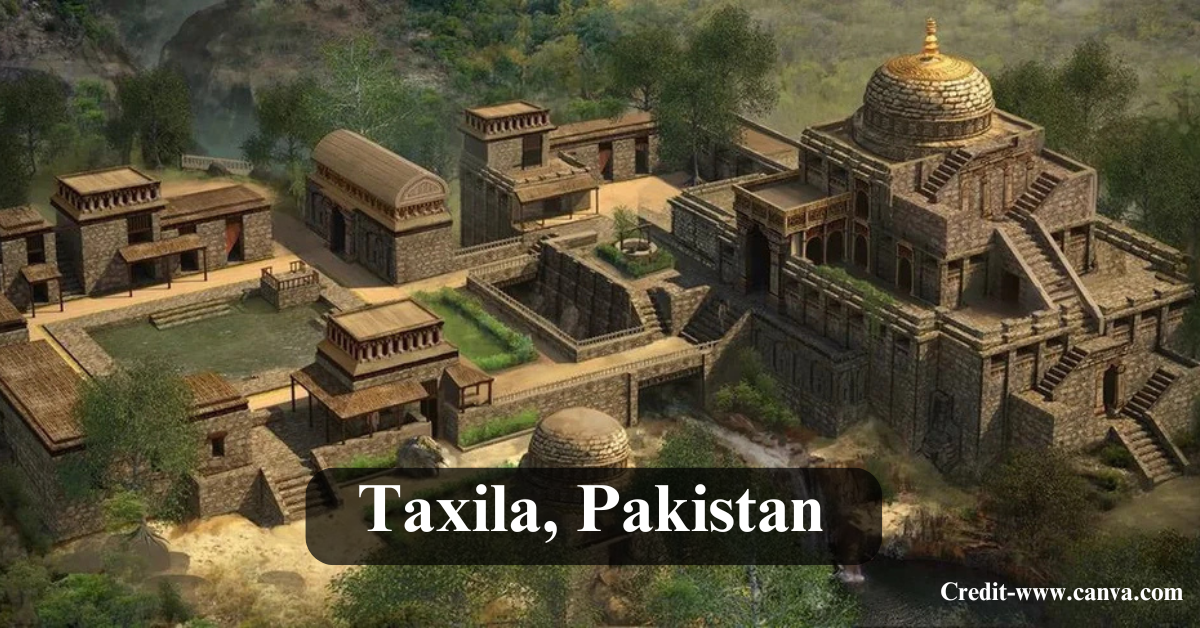Have you walked through a place that feels old? The ground there seems to hold all events. Pakistan has this sensation. A 40-minute drive from Islamabad or Rawalpindi brings you to this old city – it is not just broken walls or forgotten stones. The place represents a memory of thousands of years of learning, trade, belief, and art.
If you enjoy history, or you are looking for a trip on a weekend, or you are curious about places many people pass by, Taxila is a spot worth seeing. It quietly shows how people from different places once lived, learned, and grew together.
Table of Contents
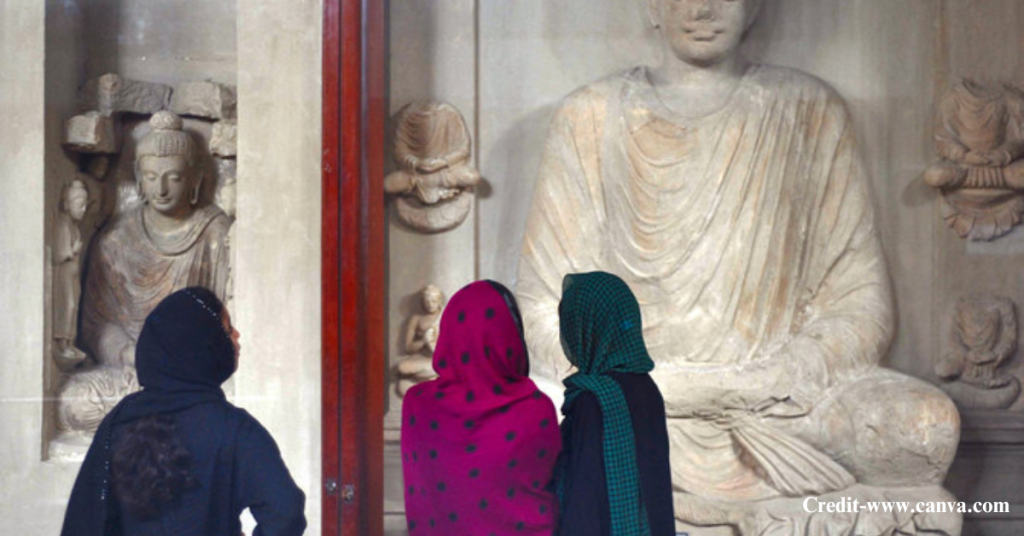
What Is Taxila Famous For?
Taxila served as a busy stop on the old Silk Road – it functioned as a cultural pathway in the ancient world. People arrived from India, China, Greece, and Persia; they traded goods, and they also exchanged ideas, faith, and skills.
The site contained three cities, which people built one after the other. It did not serve a single group. Buddhists, Greeks, and Central Asians all left their imprint on Taxila.
Many groups shaped Taxila because no one empire built it. This makes the place special.
The Gandhara Civilisation: Taxila’s Soul
Taxila was a central city in the Gandhara Civilisation. This culture joined local customs with outside influences, especially from Greece, in addition to Persia. Gandhara lasted from the 6th century BCE to about the 11th century CE. It became known for putting Buddhist ideas with Greek-style art and design.
The Gandhara region held parts of what is now northwestern Pakistan and eastern Afghanistan. Its people traded, crafted, and built well – this culture saw religious openness, travel, and learning happen together. Taxila lay at its core.
People carved Buddhist teachings into stone. Greek buildings stood beside Hindu shrines. Students arrived to learn, and monks came to meditate.
You can still observe the results in the art, design, and coins, in addition to the temples across the ruins. Gandhara was not just a place – it was a concept of living with an open mind.
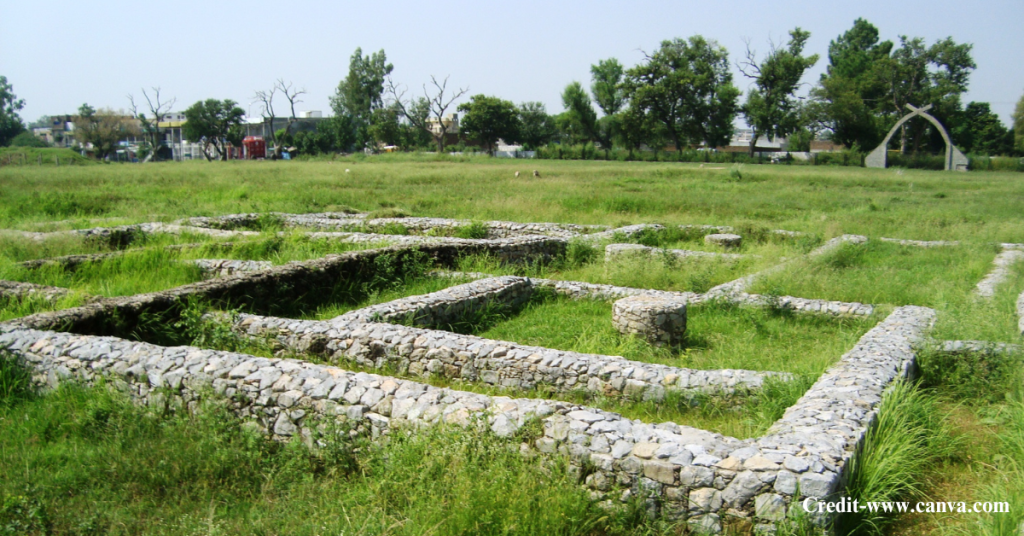
How Taxila Grew Through Time
- Neolithic period: First farmers settled in places like Sarai Khola and Hathial.
- 6th century BCE: Taxila’s first proper city—Bhir Mound
- 326 BCE: Alexander the Great entered peacefully.
- Mauryan Empire: Ashoka helped Buddhism grow.
- Indo-Greeks & Scythians: They added art and temples.
- Kushan Empire: Built Sirsukh, the most protected city.
- White Huns: In the 5th century, they destroyed many sites.
- Chinese monks: Faxian and Xuanzang visited later.
Three Cities in One
Bhir Mound
This settlement came first among the three. Dwellings made of mud brick, tight roadways, and stores show how city life began. The design was plain, but clever – it started in the 6th century BCE. Some accounts state that the local ruler greeted Alexander here without a fight.
Sirkap
The Indo-Greeks laid out this settlement. A visitor sees a straight pattern of streets, different from the winding paths at Bhir Mound. Buddhist, Jain, and Greek religious structures stand close. Sirkap also holds the Double-Headed Eagle Stupa, which presents how different ways of life are combined.
Sirsukh
The Kushans built this settlement around the 1st century CE. It features wider roads, solid walls, and signs that show Roman influence. This settlement offered better safety, but people eventually left it after attacks from the Huns. Diggers have not uncovered all of it yet, but parts of the wall remain visible.
Top Places You Shouldn’t Miss in Taxila
Dharmarajika Stupa
The Dharmarajika Stupa began in the 3rd century BCE. Ashoka constructed this big stupa, and it holds Buddha’s relics. A large central dome stands inside a ring of smaller stupas. When people excavated the area, they uncovered silver boxes, coins, and the bones of Buddhist monks. The location remains peaceful.
Jaulian Monastery
The Julian Monastery stands on a hill nearby. This monastery works for people who prefer quiet places – it holds rooms where monks stayed, and it has a prayer area. Carved Buddha figures also appear. One figure, called the healing Buddha, still attracts people, as they believe it can relieve illness.
Mohra Moradu
A smaller site, but filled with amazing carvings. Panels around the stupa tell stories from Buddha’s life. The site is less crowded and perfect for reflection or photography.
Sirkap Ruins
Temples of all kinds—Jain, Hindu, Buddhist, and even Greek—are found here. The architecture shows how different beliefs existed together. The Double-Headed Eagle Stupa is unique in this part of the world.
Jandial Temple
A rare Greek-style temple with Ionic columns. It was likely used for learning or worship by Indo-Greeks. Some experts think it may even have been a Zoroastrian fire temple.
Bhir Mound
Little remains above ground, but this place holds importance – it shows the first part of the city of Taxila. One can consider it the starting point of the city’s long journey.
Sirsukh
A strong and planned city with thick walls. You can still see the wall stretching across the land. It’s less developed for visitors, but it gives a raw and real look at old urban life.
Taxila Museum
Opened in 1928, this museum has over 7,000 objects from all the nearby ruins. You’ll see Buddha heads, coins, tools, jewellery, and pieces of buildings. The museum itself is a piece of history.
Greco-Buddhist Art: East Meets West in Stone
Think of Buddha dressed in a Greek-style cloak. He stands still and has curly hair. This is what you observe here. People call it Greco-Buddhist art – it began in Taxila.
Greek artists brought their talent when they moved to the area; they did not carve their typical gods. They began to carve images of Buddha – this caused a mix of Greek realism in addition to Buddhist calm.
These styles later spread into China, Korea, and Japan. In a sense, it helped form how Asia views Buddha.
Taxila University: Ancient Learning Without Walls
There was not a single building constituting Nalanda University. Students engaged in discussions, sometimes even under the open sky or under the trees. To pursue studies in fields like:
People also came here from far away, including places like China and Afghanistan.
- Medicine (Ayurveda)
- Politics and planning
- Grammar and languages
- Astronomy
- Military training
A person who helped build the Mauryan Empire learned at this place. An old doctor who wrote early books about Ayurveda also taught there.
How to Visit Taxila in 2025
Getting There
The trip from Islamabad takes 35 to 40 minutes of driving. People travel on either the GT Road or the M-1 Motorway. From Rawalpindi, local vans, taxis, or buses move every day. The Taxila Junction railway station accepts trains.
Best Time to Go
- October to March: Nice weather and better walking conditions
Entry Fee
- 20 for locals
- 500 for foreigners
What to Carry
- Water bottle
- Sunscreen
- Hat or cap
- Camera or phone
- Notebook or journal
One-Day Travel Plan for Visitors
Time | Activity |
9:00 AM | Leave Islamabad |
9:45 AM | Visit Taxila Museum |
10:30 AM | Explore Sirkap & Jandial Temple |
12:30 PM | Jaulian Monastery |
2:00 PM | Lunch at Wah Cantt |
3:30 PM | Khanpur Dam (for boating, photos) |
6:00 PM | Return, option to stop at caves |
Nearby Attractions You Can Visit
- The Khanpur Dam sits thirty minutes from Taxila. A person can boat on the lake, use a jet ski, or ride a zip line. People enjoy the view from this spot.
- Wah Gardens went up when the Mughals ruled. The area stays cool and green – it provides a good place to walk.
- Nicholson’s Obelisk stands as a tall tower from the British period. From here, visitors see the hills and nearby towns.
- The Shah Allah Ditta Caves date back two thousand years. Hindu sadhus, Buddhist monks, and later Sufi saints lived there. People observe carvings on the walls plus find shade from old trees.
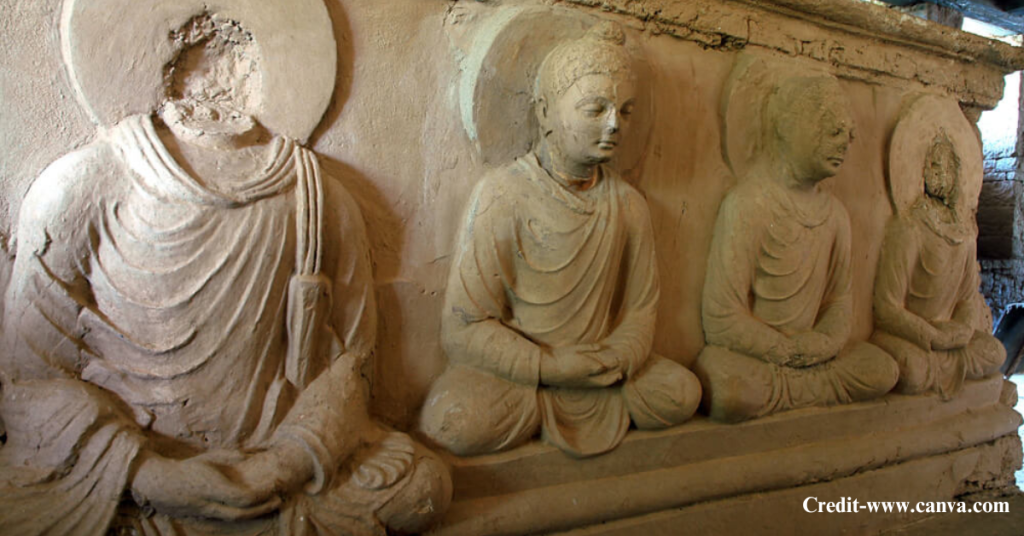
Where to Eat Nearby
- Taxila Junction Restaurant – Good local dishes at fair prices
- Wah Cantt Food Street – Offers fast food and desi options
- Restaurants in Islamabad – For more variety, or cafes
Conservation & Today’s Problems
Problems:
- The weather is slowly damaging stone structures
- Visitors sometimes don’t follow the rules
- Few signs or guides are available
What’s Being Done:
- UNESCO and local groups are fixing broken parts
- Archaeology students from Pakistani universities use the site for learning
- More work is needed to protect it better and make it easier to visit
FAQs
Where is Taxila located in Pakistan?
Taxila lies about 35 – 40 kilometres from Islamabad, within Punjab province – it sits between Islamabad and Rawalpindi. People
What is Taxila famous for?
Taxila is well known for its old Buddhist ruins, for its Greco-Buddhist art, and for its place in the Gandhara Civilisation. It served as a large learning centre and as a st
What are the top places to visit in Taxila?
The main places to visit in Taxila include the Taxila Museum, the Jaulian Monastery, and the Dharmarajika Stupa. Other sites are S.
Is there an entry fee to visit the Taxila ruins or museum?
A visitor pays to enter the Taxila ruins or the museum. The fee is 20 rupees for people from the area – it is 500
What is the best time to visit Taxila?
From October to March, the weather stays cool. That period provides a better time to visit Taxi.
How can I reach Taxila from Islamabad?
One can travel to Taxila from Islamabad by going on the GT Road or the M-1 Motorway.
Is Taxila safe for tourists?
Taxila has a safe environment. Visitors should know the local rules at the ruins; they must show respect and go there during the day.
Can I take photos at the ruins and museum?
People can take pictures in many outdoor areas. Could you check with the staff before taking photographs inside the museum?
Are there guides available at Taxila?
Some local guides may be available, especially at the museum. But it’s better to do some research or bring a printed guide since signage is limited.
Is there food available near the ruins?
Yes. You’ll find desi restaurants in Taxila city and more food choices in Wah Cantt and Islamabad, which are close by.
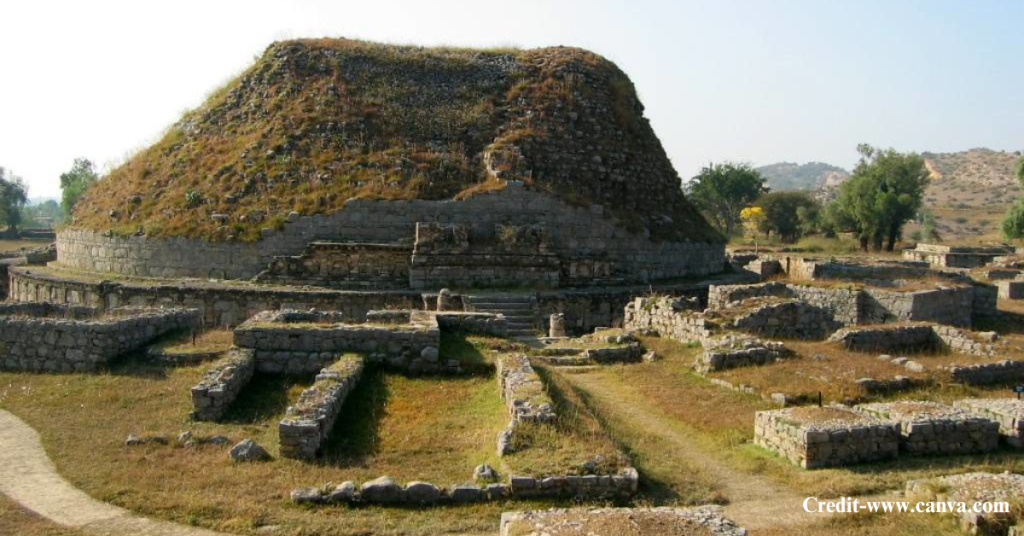
Final Thoughts
Taxila is not a place with only broken stones or old statues – it shows a living story about how people from many places once shared knowledge, beliefs, and skills. When travel was slow and borders caused trouble, Taxila took in artists, teachers, monks, as well as traders from all directions.
When a person walks through its ruins today, one does not only see history – one feels it. The carved stones, the quiet monasteries, and the wide streets of old cities like Sirkap, in addition to Sirsukh, demonstrate that learning plus peaceful living reached far into the past.
In a setting full of noise and quick changes, Taxila offers a rare item – a quiet space. This space helps us remember the depth of our roots.
When people want to travel more than a few days, they can go to Taxila – it is a place that tells a story without saying anything. The city has stayed in this location for over 3,000 years.
It still waits to teach us something.

